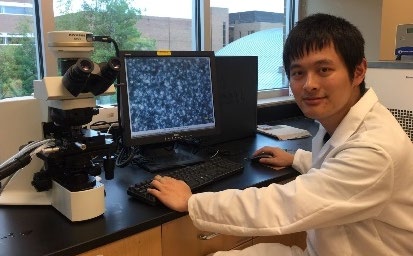
There are many advantages to freezing food, including food preservation, access, and convenience, but oftentimes quality and taste suffer due to the formation of large ice crystals as a result of ice recrystallization. Natural ice recrystallization inhibitors such as antifreeze proteins and glycoproteins exist but they are not readily available, and at $10,000/g they are too expensive for large-scale food processing use. Adding high levels of cryoprotectants such as sucrose and sorbitol can improve the quality of frozen foods, but oftentimes public perception is that these additions make frozen food high in calories and considered highly processed, negatively impacting consumer acceptance of frozen foods. Customer satisfaction is essential to the competitiveness of the frozen food industry, which signifies the importance of controlling ice recrystallization in frozen food.
Researchers in the Department of Food Science at the University of Tennessee, Institute of Agriculture have made a discovery that has the potential to provide a sustainable solution to the frozen food industry in how it combats ice recrystallization. Associate Professor Tao Wu led a team that discovered a novel group of ice recrystallization inhibitors derived from cellulose biomass. Cellulose is the most abundant biopolymer on Earth and is present in nature as fibers that have a diameter of less than 100 nanometers (one nanometer = one billionth of a meter), and are organized as bundles in plant cell wall. Currently, nanoscale cellulose materials in forms such as cellulose nanofibrils and cellulose nanocrystals are commercially produced. The research team discovered a potent ice recrystallization inhibition activity in two nanocelluloses and the conditions necessary for these materials to inhibit ice recrystallization.
This discovery undoubtedly will impact the frozen food industry as well as the medical community and sustainable agriculture. Controlling ice recrystallization on frozen food can improve food quality and customer satisfaction. This research can spur innovations in other areas such as public health where medical workers who freeze cell cultures, tissues, and organs for preservation will benefit from controlled ice recrystallization. Additionally, identifying novel applications of nanocelluloses can improve the sustainability of agriculture production, reduce the environmental impact, and increase the profitability of biomass processing associated with agriculture and forestry.
“The applications of nanocellulose as an ice recrystallization inhibitor could potentially open up numerous opportunities to eliminate the dreaded freezing damage we all have seen while increasing the shelf life of frozen foods and consumer satisfaction.”
-Dr. David White, Associate Dean for AgResearch and
Interim Head, Department of Food Science, UT
The American Chemical Society recently published an article on the team’s research in their high impact biopolymer journal Biomacromolecules. The lead author, Teng Li, is a Ph.D. student mentored by Dr. Wu. Other contributors include Ying Zhao, a visiting student from Nanjing Agricultural University, and Dr. Qixin Zhong, Professor in the UTIA Department of Food Science.
This study was supported by the USDA National Institute of Food and Agriculture, Hatch project 1016040 and Hatch/Multi-state project 1007076.
The China Scholarship Council supported Ying Zhao, a visiting student from Nanjing Agricultural University.
For Further Information:
Teng Li, Ying Zhao, Qixin Zhong, and Tao Wu. “Inhibiting Ice Recrystallization by Nanocelluloses” Biomacromolecules 2019 20 (4), 1667-1674
DOI:10.1021/acs.biomac.9b00027